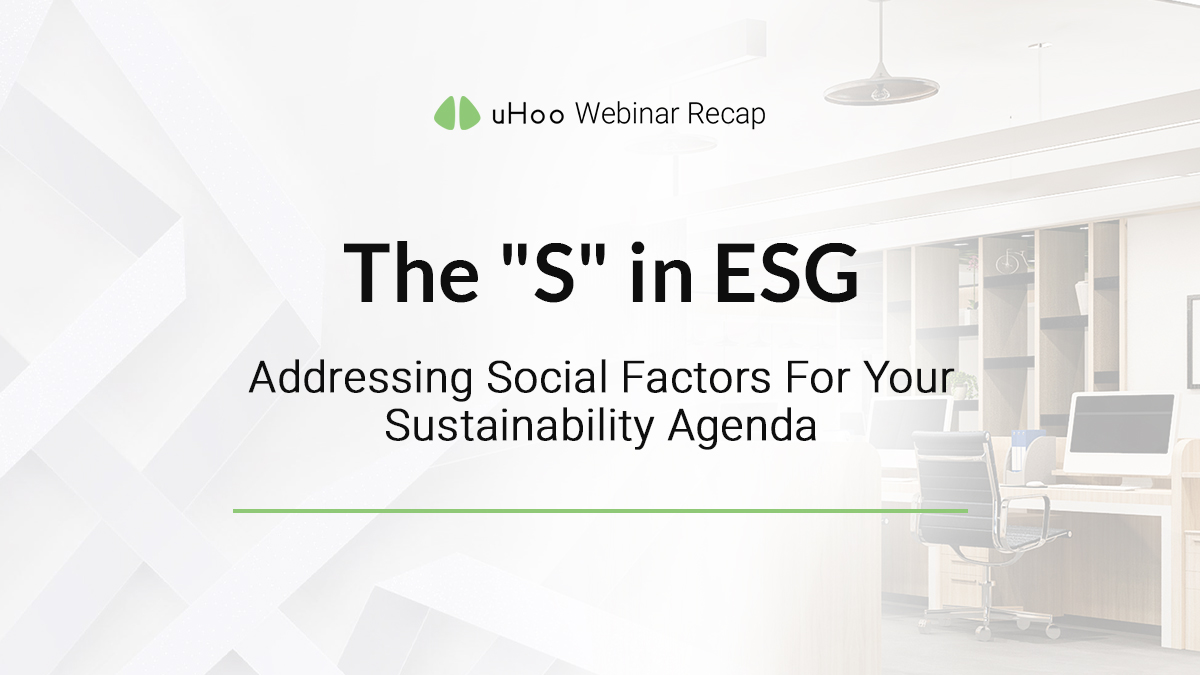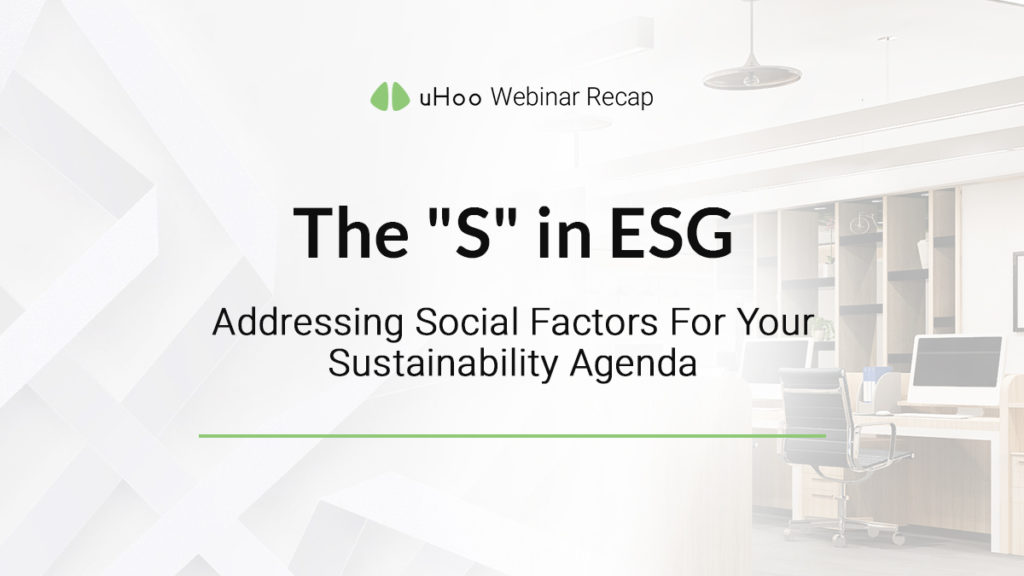
What does the ‘S’ in ESG mean? Why should organizations care about societal issues and challenges?
Two expert speakers taking part in our recent webinar described what the Social pillar in ESG really means, its importance, and its role in helping organizations increase their sustainability performance.
The Increasing Importance Of Addressing The Social Factor In Organizations
Belinda D’Souza, Head of Environmental, Social and Governance (ESG), and Statutory Reporting at Australian Red Cross
First up, Belinda D’Souza shared with us a clearer definition of ESG – the ability to create and sustain long-term value in a rapidly-changing world, and manage the opportunities and risks associated with these changes. She emphasized that ESG is not just about risk management but also about the opportunities, contributions, and the positive impact that we can bring to the community where we live and operate.
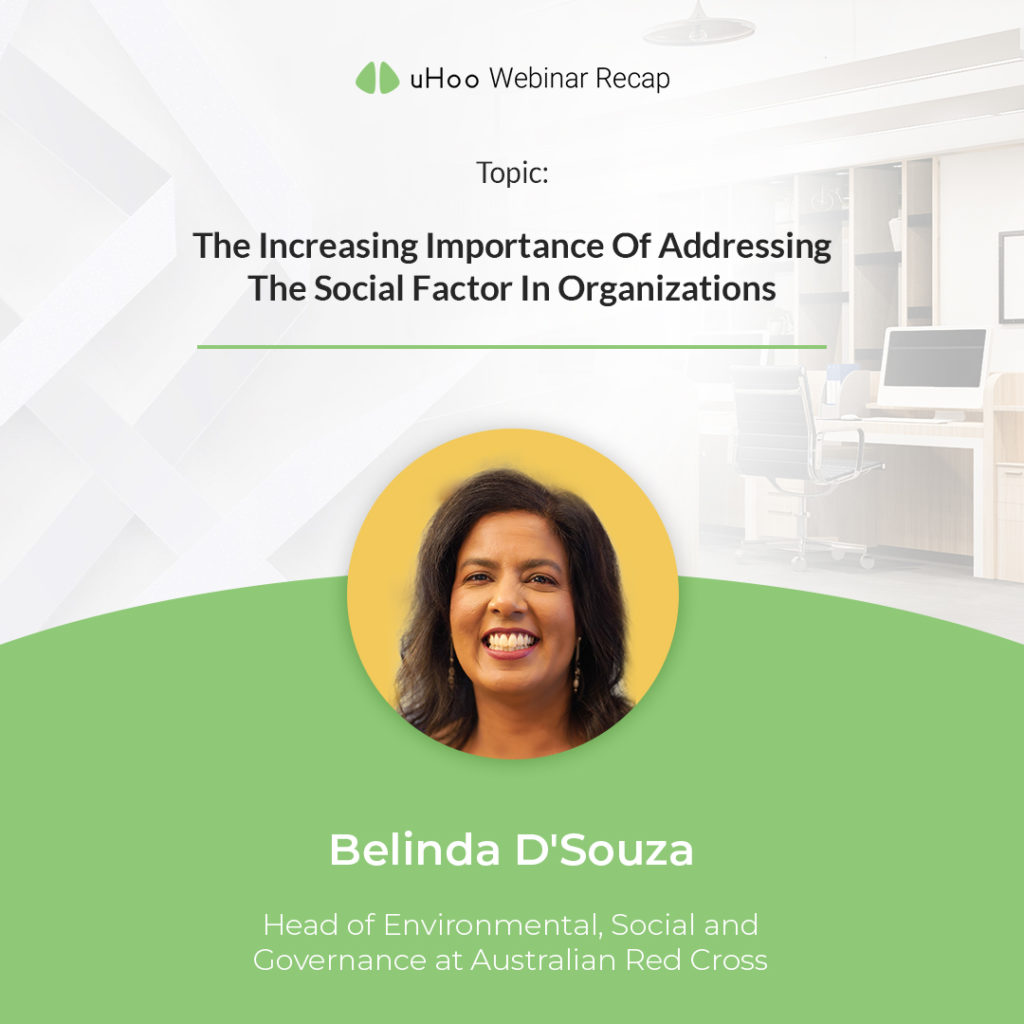
While many companies put excessive focus on the Environmental pillar of ESG, the humanitarian consequences or the social impact of the current environmental situation should not be abandoned. One example is the connection between humanitarian displacement and natural disasters. Compared to war and violence, more people today are being forced to move and leave their own countries due to the impacts of disasters and climate change.
| Social |
| Respect humanity including protecting life and ensure respect for human being |
| Eliminating modern slavery |
| Inclusion and diversity |
| Supply chain impact and payment time to small suppliers |
| Fair remuneration, training & development, workplace conditions health and safety |
| Relationships & stakeholder engagement |
| Social impact of our organization on people and communities including program delivery and humanitarian diplomacy |
The Australian Red Cross addresses the Social aspect of ESG by:
(1) Putting respect and protection to human life as part of their DNA.
(2) Reduce the risk of exposure to modern slavery or the severe exploitation of workers for personal and commercial gains
(3) Promoting inclusion and diversity not just by respecting gender preferences but also by embracing different perspectives from various aspects of life which includes indigenous employment and the establishment of ageless workplaces. This also tackles employee needs and mental health.
(4) The thorough selection of suppliers not just by its pricing and rates but by considering what impacts it presents on the society and how it is supporting vulnerable communities.
(5) Ensuring fair remuneration, good working conditions, and protecting health are also part of their social agenda. Since the Australian Red Cross is a non-profit organization, their activities and programs rely on funding from corporate partners and through tendering. Recently, the organization successfully tendered with their local government to install heating, ventilation, and air conditioning (HVAC) systems to improve air quality, and ensure health and safety. Additionally, part of their social initiatives is to make sure that employees are getting paid fairly to help employees afford a decent standard of living
(6) Working together with stakeholders to manage environmental risk and provide positive impact to local communities that the organization is serving.
(7) Contributing to society through volunteering, establishment of programs, taking part in advocacies, facilitating operations, and raising awareness on the needs of other people. By delivering numerous social work particularly in the last 12 months, the Australian Red Cross is able to support thousands of people in need. These social works include Meals on Wheels, employment services, and migration assistance.
Before her session ended, Belinda provided with us some opportunities that businesses and other organizations can participate in partnership with Red Cross:
- Conducting training for staff about modern slavery, supply chain, International Humanitarian Law, and first aid
- Having emergency services in place such as psychological first aid, preparedness workshops, and long-term emergency recovery work
- Funding environmental initiatives including offset projects in area of impact, solar energy, EV, and air quality.
- Funding other social outcomes where the Australian Red Cross’ strategies align such as walking alongside the first nations people, migrants in transition, supporting vulnerable groups in the community.
- Providing employment opportunities to vulnerable groups that the Australian Red Cross is serving.
- Volunteering to the Australian Red Cross’ social works
- Internal staff and community initiatives
- Waste reduction, recycling through Red Cross shops
- Donating to specific appeals or general Red Cross initiatives
Australian Red Cross is a premier humanitarian organization in Australia that is committed to provide services that protect lives and prepare communities to address climate-related situations and emergencies.
To know more about the organization and their works, click here.
The Benefits Of Establishing A Safe And Inclusive Organization
Niels Nable, Head of Sustainability Reporting and Partnerships at Meralco
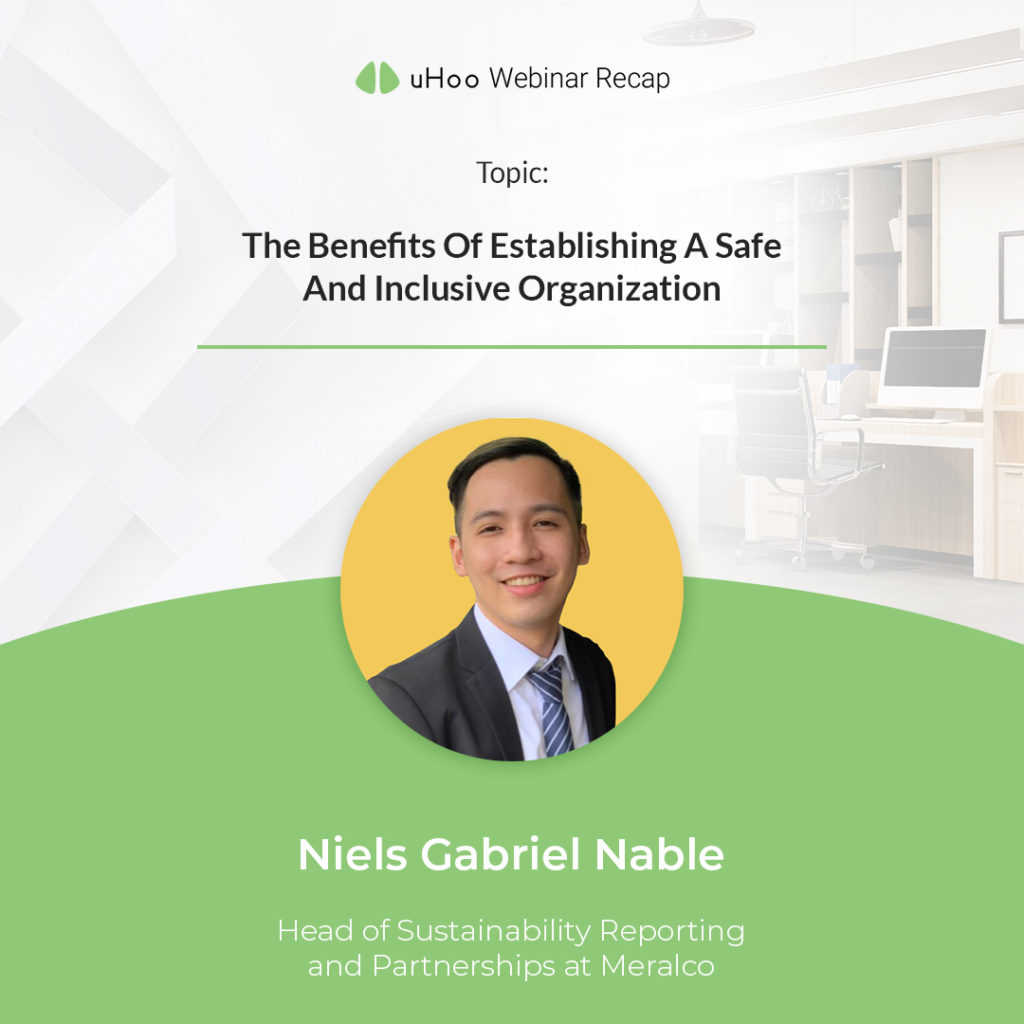
The session with Niels is focused on two social areas: (1) occupational health and safety, and (2) workforce diversity and inclusion.
First, what is occupational health and safety?
Niels Nable defined occupational health and safety as a multidisciplinary practice that deals with all aspects of employees’ health and safety in the workplace. This includes measures within or beyond the work premises to prevent injuries and hazards.
Despite the standards being mandated by law in many different countries, 1.9 million fatalities yearly due to work-related injuries and illnesses are being recorded, making it one of the main causes of death around the world. 450,000 of these deaths are due to the employees’ exposure to dangerous levels of air pollutants such as particulate matter (PM) and carbon monoxide (CO).
The negative effects of air pollution on health translates to massive losses not only for individual companies but to the entire global economy. In fact, the International Labor Organization (ILO) estimates that the annual cost to the global economy due to work-related hazards is $3 trillion. This serves as a strong reason for companies to establish strategies to safeguard the health and wellbeing of employees.
The discussion with Niels also emphasized workforce diversity and inclusion. Diversity is referred to as the presence of differences in an organization, this includes gender, ethnicity, disability, and age. While inclusion is the practice of ensuring that people feel a sense of belonging and support from the organization.
Inequality and discrimination in the workplace are prevalent across the globe. This claim is strengthened and proven by the following statistics:
47% is the current global labor force participation rate for women
86% of Gen Z workers have experienced some form of discrimination at work
Women earn 37% less than men in similar roles worldwide
58% of workers who are at least 50 years old have noticed age bias in the workplace
Meralco and its social initiatives
According to Niels, Meralco continuously strives to contribute to the SDG 8, one of the 17 Sustainable Development Goals that focuses on “decent work and economic growth” Meralco improves their occupational health and safety systems and processes to comply with global standards. In 2019, the company launched the Target Zero: Zero Incident, Zero Harm program which immediately improved safety performance by decreasing incident frequency and severity across the organization. This was supported by award-winning safety programs such as safety alerts disseminated through email and social media, an improved Incident Report Management System and Daily Safety Huddles (DASH). Meralco also successfully transitioned to the new Occupational Health and Safety (OHS) ISO Management System (45001:2018).
Another important milestone that Niels shared with us as part of their occupational health and safety improvement journey is their initiative to closely monitor air quality through the installation of air quality monitoring devices in strategic locations across the Meralco headquarters in Manila, Philippines.
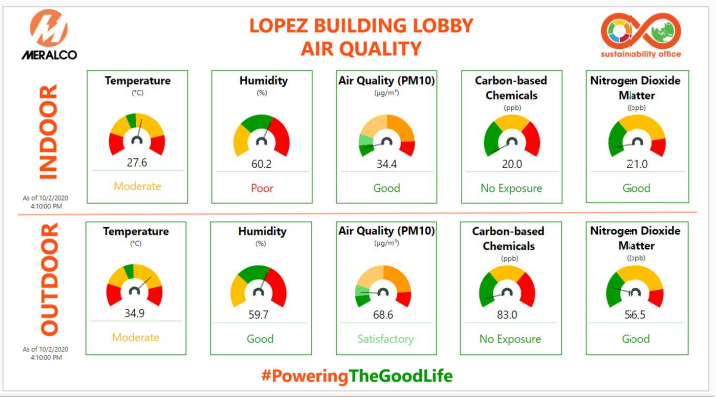
Monitoring air quality helps Meralco in collecting information on the factors that can affect work environment and employee health including temperature, particulate matter, volatile organic compounds (VOCs), and nitrogen dioxide.
Along with the SDG 8, Meralco also supports the SDG 5 which supports gender equality and the SDG 10 that particularly focuses on reducing inequalities. SDG 5 and SDG 10 targets are fulfilled by the continuous sourcing and delegation of women for a variety of roles from rank and file up to the senior management positions.The company is proud to achieve 26% women representation in its total workforce, which is more than double than the global average for the energy sector. Additionally, 25% of its senior and middle management groups are women.
Meralco eyes improvement in its initiatives and sets its 2030 target to have 40% women representation in its workforce.
Niels ended his informative presentation reminding audiences that:
“Protecting employees from harm and embracing diversity and inclusion are not just “nice to have” – they are also good for your company’s bottom line and our society as a whole. “
To get to know more about Meralco and its ESG projects, click here.
This webinar organized by uHoo aims to educate organization leaders and all individuals on the importance of addressing social issues and to empower them to participate in the movement towards a healthier, encouraging, and inclusive world for everyone. Watch this webinar on-demand now!

